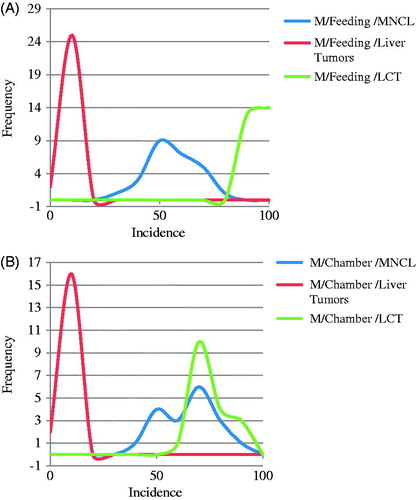Figures & data
Table 1. Variables, factors and events influencing the incidence of MNCL in F344 rats.
Table 2. Decreased frequency of MNCL in NTP studies.
Table 3. Male and female F344 rat MNCL responses in NTP studies.
Table 4. NCI/NTP F344 rat studies with a positive leukemia response started and evaluated prior to introduction of NTP levels of evidence of carcinogenicity.
Table 5. NTP studies where at least one sex had MNCL classified as clear evidence of carcinogenicity.
Table 6. NTP studies where at least one sex had MNCL classified as some evidence of carcinogenicity.
Table 7. Occurrence of MNCL in NTP studies with at least one sex classified as equivocal evidence of carcinogenicity.
Table 8. NTP studies that had a Leydig cell tumor response.
Table 9. NTP studies that had a tunica vaginalis mesothelioma (TVM) response.


